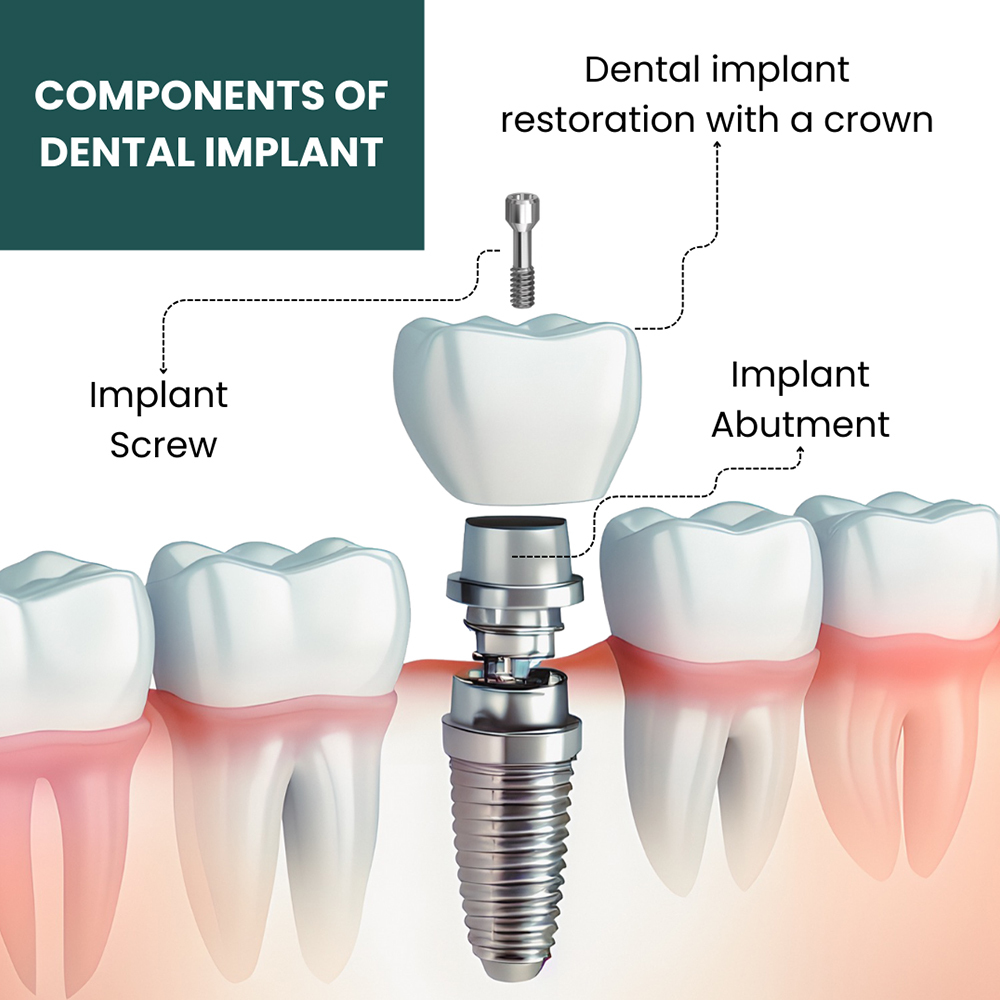5 Easy Facts About Dental Implants Described
Little Known Questions About Dental Implants.
Table of ContentsThings about Dental ImplantsWhat Does Dental Implants Mean?A Biased View of Dental ImplantsSee This Report about Dental Implants
are clinical tools operatively implanted into the jaw to recover a person's capability to eat or their look. They give assistance for synthetic (fake) teeth, such as crowns, bridges, or dentures. When a tooth is shed because of injury or illness, an individual can experience complications such as quick bone loss, malfunctioning speech, or changes to eating patterns that lead to pain.
Framework of The Oral Implant System choosing oral implants, speak with your dental service provider regarding the possible advantages and threats, and whether you are a candidate for the treatment. Points to take into consideration: Your total health is a vital consider determining whether you are a great candidate for oral implants, how much time it will take to heal, and for how long the dental implant may remain in location.
Smoking might influence the recovery procedure and reduce the lasting success of the dental implant. The recovery procedure for the dental implant body may take several months or longer, throughout which time you commonly have a temporary joint in place of the tooth. the dental implant procedure: Carefully comply with the dental health instructions offered to you by your dental supplier.
The Best Guide To Dental Implants
Implant failure can result in the need for an additional surgical treatment to take care of or change the implant system. Brings back the capability to chew Recovers cosmetic appearance Assists keep the jawbone from shrinking due to bone loss Protects the wellness of the surrounding bone and periodontals Aids keep adjacent (neighboring) teeth stable Enhances high quality of life Damage to surrounding natural teeth during implant positioning Injury to the surrounding cells throughout surgical procedure, such as sinus perforation Injury throughout surgery (for instance, fracture of bordering jawbone) Poor function, such as feeling like the teeth do not attack with each other generally A feeling that the tooth is loosened or turning in area resulting from a joint screw loosening up Implant body failure (looseness of the implant body) as a result of systemic infection, which might be extra likely in clients with uncontrolled diabetes mellitus due to regional infection in bone and gum tissues supporting the implant body due to postponed recovery, which may be most likely in clients that smoke Problem cleaning up the gums around the implant, causing bad dental hygiene Unattended gum condition Post-surgical tingling due to nerve impingement or damage Constantly alert health and wellness treatment providers and imaging professionals that you have dental implants before any type of magnetic resonance imaging (MRI) or x-ray procedures.
FDA is not familiar with any type of negative events reported for MRI image source or x-ray procedures with oral implants. Oral implants systems are commonly constructed from products that follow global consensus standards of the International Organization for Standardization (ISO) or ASTM International. These standards have information of what makes a risk-free product.
Other products such as gold alloys, cobalt-based alloys, titanium alloys, or ceramic materials are occasionally utilized. The safety and security profiles of these materials are widely known. Oral dental implant systems are examined according to international consensus standards. Biocompatibility testing, to show that physical contact with the device does not cause problems like inflammation or sensitive response, is component of the analysis that helps ensure the materials in the dental implant system are safe and do not trigger adverse effects when implanted in individuals.

4 Simple Techniques For Dental Implants
Some individuals are not eligible for dental implant surgery. It is for dental cosmetic surgeons to operate people with: severe illnessuncontrollable metabolic diseasebone or soft cells condition or infectionIf these concerns are dealt with, a person can have the surgery. Dental Implants. In, dental doctors avoid operating individuals with: If people with any of the above go through oral implant surgery, there is a higher danger of the dental implant stopping working
Some people have a jawbone abnormality that protects against adequate bone for a dental implant from developing. The doctor will after that make use of a bone or bone alternative to fix and develop up the area.
Oral dental implant surgical treatment is a customized procedure. It's not the exact same for everyone. But the complying with gives a basic overview of what you can anticipate your dental expert, oral cosmetic surgeon, periodontist or prosthodontist to do: Put the dental implant operatively. Provide you time to recover. Attach the article and last crown, bridge or denture.
Next, your specialist will carefully put the oral implant right into your jaw. If your dental implant is near go the front of your mouth, your dentist will make a short-lived tooth for you to wear up until you heal.
More About Dental Implants
Your provider can inform you what to anticipate in your situation. Throughout the recovery phase, your jawbone needs to fuse to the dental implant. This procedure, called osseointegration, is critical for security and long-lasting success. This process can take anywhere from Our site three to 9 months. Sometimes, it may take much longer.
As soon as your dental implant heals, your dental practitioner can connect the abutment (small adapter message) and your final restoration (crown, bridge or denture). This normally takes regarding one hour to complete and might call for a second small surgical procedure. You shouldn't really feel any type of discomfort during your oral implant procedure since your provider will certainly use drug to numb your gums.